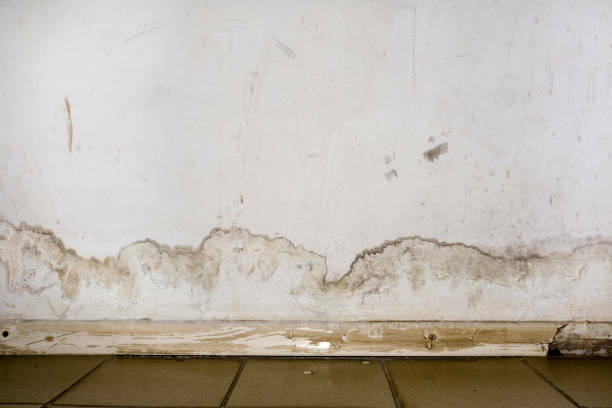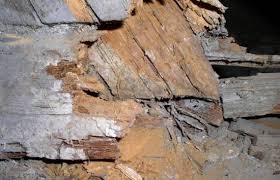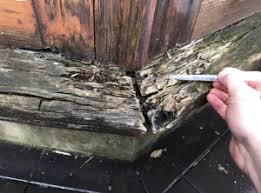

It is believed that around one in five homes in the UK suffers from a damp problem of some kind, partly due to our climate but also for a host of other reasons. Older buildings with a 'single skin' of brickwork are more likely to be prone to damp issues than modern houses with a double skin cavity wall. Leaking downpipes or guttering, defective plumbing, roof defects or loose/broken roof tiles, breached damp-proof courses, inferior or old window frames, and a lack of proper ventilation leading to excess condensation are all common causes of water ingress that contribute to the problem of timber decay.
What connects all of these is the fact that, as well as spoiling the look of our Gateshead homes, they can cause structural damage and health issues in some cases, as certain moulds can cause respiratory conditions.
The first step in resolving any of these issues is to correctly identify the problem, and this isn't always easy. It pays to familiarise yourself with the symptoms of each type so that you can either fix the problem yourself or call the experts to do this for you (highly advisable in most cases!). When you're armed with the right knowledge you will be better equipped to understand what methods the experts will use, as well as being able to tell if they are acting in an underhand manner to make you spend more than you need to.


Both are common types of fungal decay that grow in damp conditions and can seriously damage your property if not identified and treated as soon as possible. The trouble is that the infected timbers are usually hidden inside wall or floor cavities, so the problem often doesn't present itself until you spot the tell-tale signs.
Black mould, fungal growth, mildew and a musty smell might give you a clue that there is a problem, usually on or around skirting boards, plaster and floorboards, especially near baths or washing machines.
Whatever the actual cause, you need to know whether this is wet rot or dry rot, as they require different treatments. The good news is that wet rot, though the more common form, isn't usually as serious. The bad news is that if not treated in time it can still cause severe structural problems because of the weakened timbers.
Let's look at the differences between wet and dry rot:
These clues should help you to figure out which type of fungal decay you are dealing with, but what are the actual signs to look out for?
Damp timbers might have cobweb-like mycelium strands growing on them. These fern-shaped brown or white strands spread through the wood, breaking down the cellulose that gives the wood its strength and structure. In later stages you could see 'fruiting bodies' (mushroom-like body) growing on the wet timber.
Timber affected by wet rot growth will be spongy to the touch, even under painted surfaces. Unpainted timber may become discoloured, either lighter (looking bleached) or darker than the unaffected wood around it.
As the fungus spreads you will probably notice an unmistakable musty smell, a strong aroma of mushrooms.
Fabric, carpet, wallpaper, floorings and plaster can become decayed as the damp spreads. The high moisture content can encourage other types of mould or mildew to form.
As the wood begins to decay, paint finish often starts to crack and flake away. If you spot this sign and are concerned about wet rot, try inserting a thin-bladed knife into the wood. In sound timber the blade will stop well before it reaches the handle. However, if the blade slips straight in without stopping then there's a good chance that it is infected with wet rot fungus.
If or when the source of moisture is removed, the timber shrinks and cracks, becoming very crumbly.
If you suspect you have an attack of wet rot in your house, the very best thing you can do is to contact Damp Hero your local wet rot specialist for expert advice. Dedicated DIY enthusiasts might be tempted to take on the job themselves, and while this is commendable you need to be very sure about what you are doing.
As wet rot specialists will have a broad experience and be prepared for all eventualities. They will survey the property, identify the problem and determine the extent and severity of any damage, and even help out with necessary repairs.
The first step will be to find the source of damp as there is no point applying wet rot treatment before this happens as the wet rot spores will continue to spread in the wet wood.
Once the water ingress has been discovered and fixed, wet rot treatment can begin.
During a wet rot survey, decayed wood will be assessed as to the extent of the damage, and removed if necessary. Where possible, healthy decorative or structural timbers will be kept. Adjacent timbers around the repaired/replacement wood will be coated with preservative and wood hardener, as well as fungicidal treatment. Any replacement wood will be pre-treated timber.
The building will need time to dry out completely prior to any redecorating work.
The best advice to any Gateshead homeowner who suspects they have wet rot is to contact Damp Hero wet rot experts without delay. Finding and fixing the problem early is essential if you want to avoid greater costs in the future, as long-term damp problems could compromise the structural integrity of your home.









